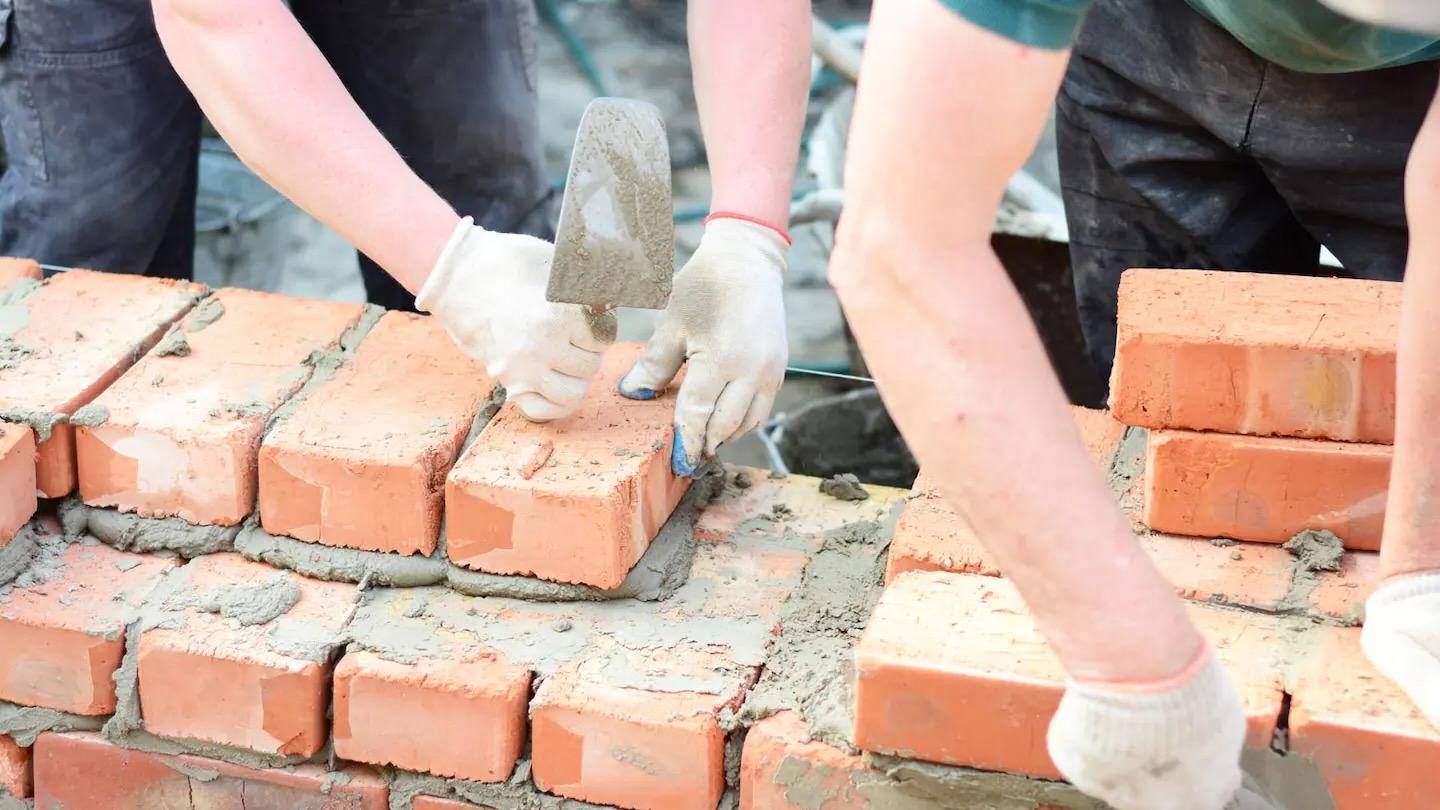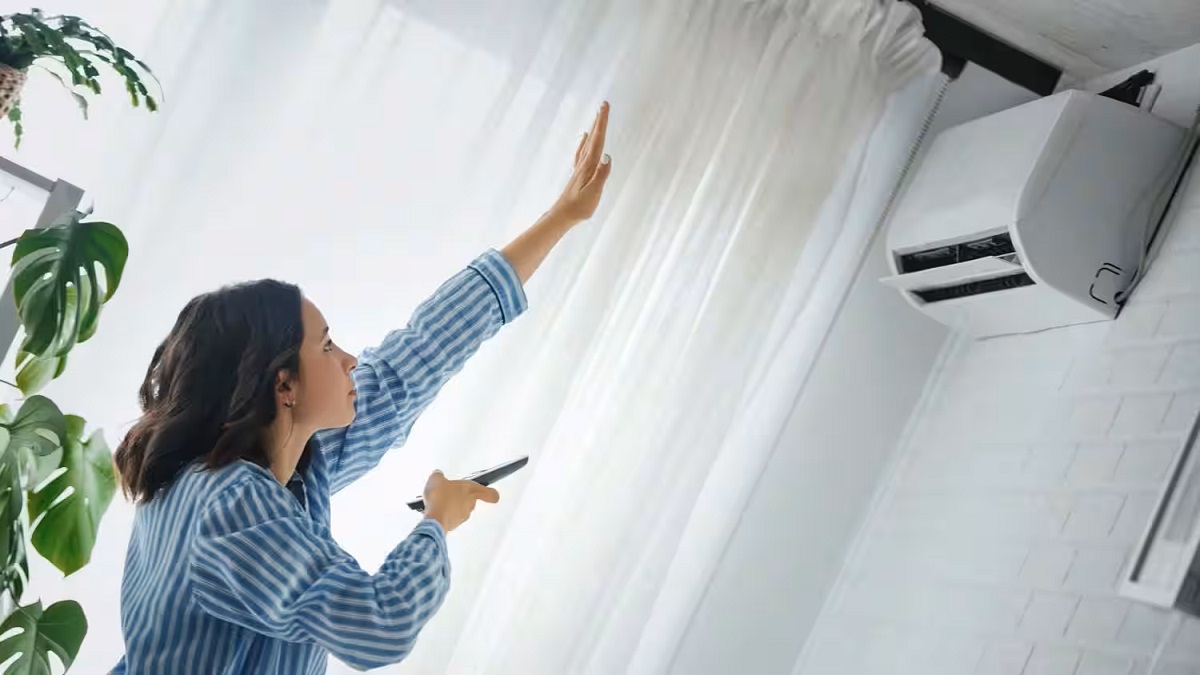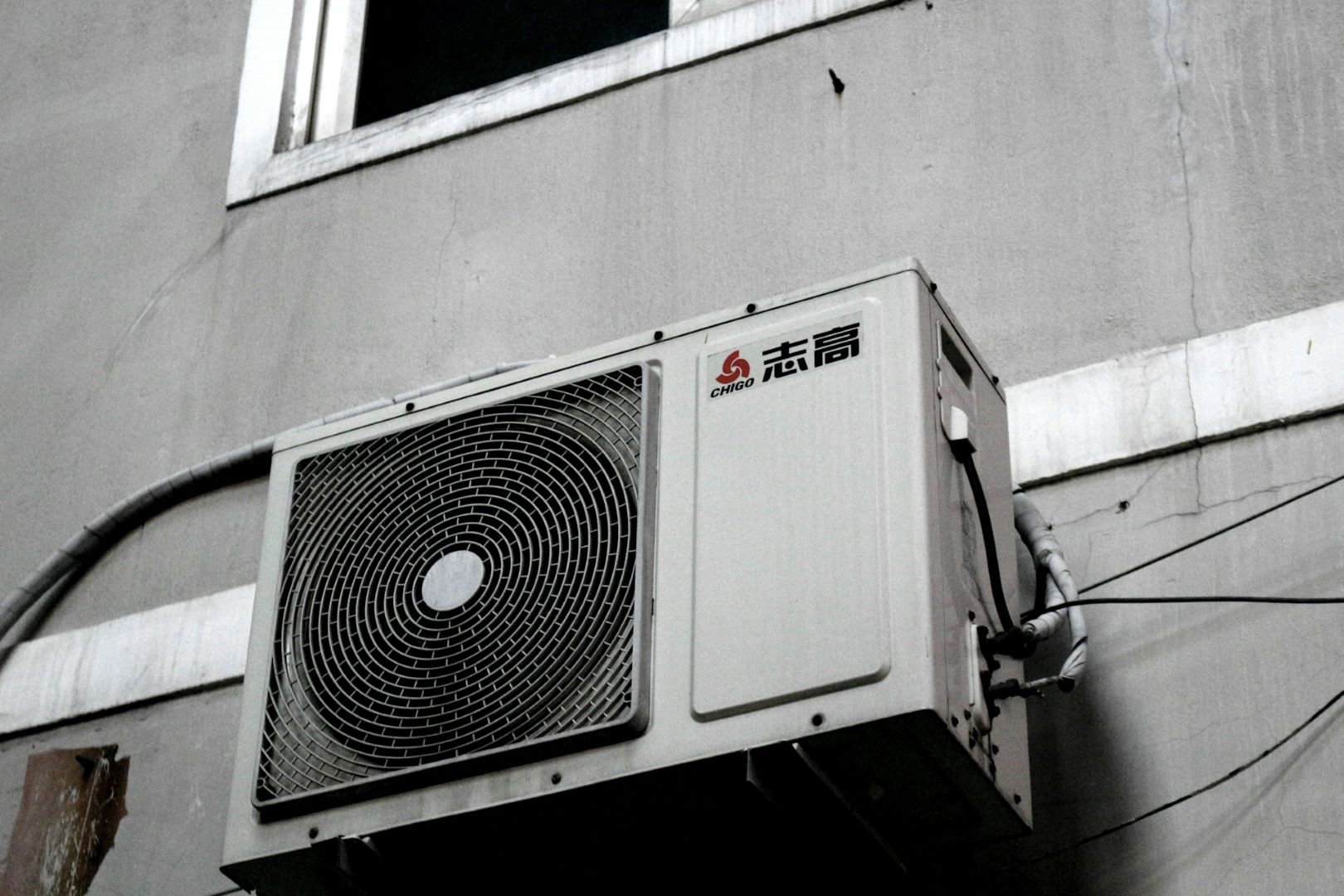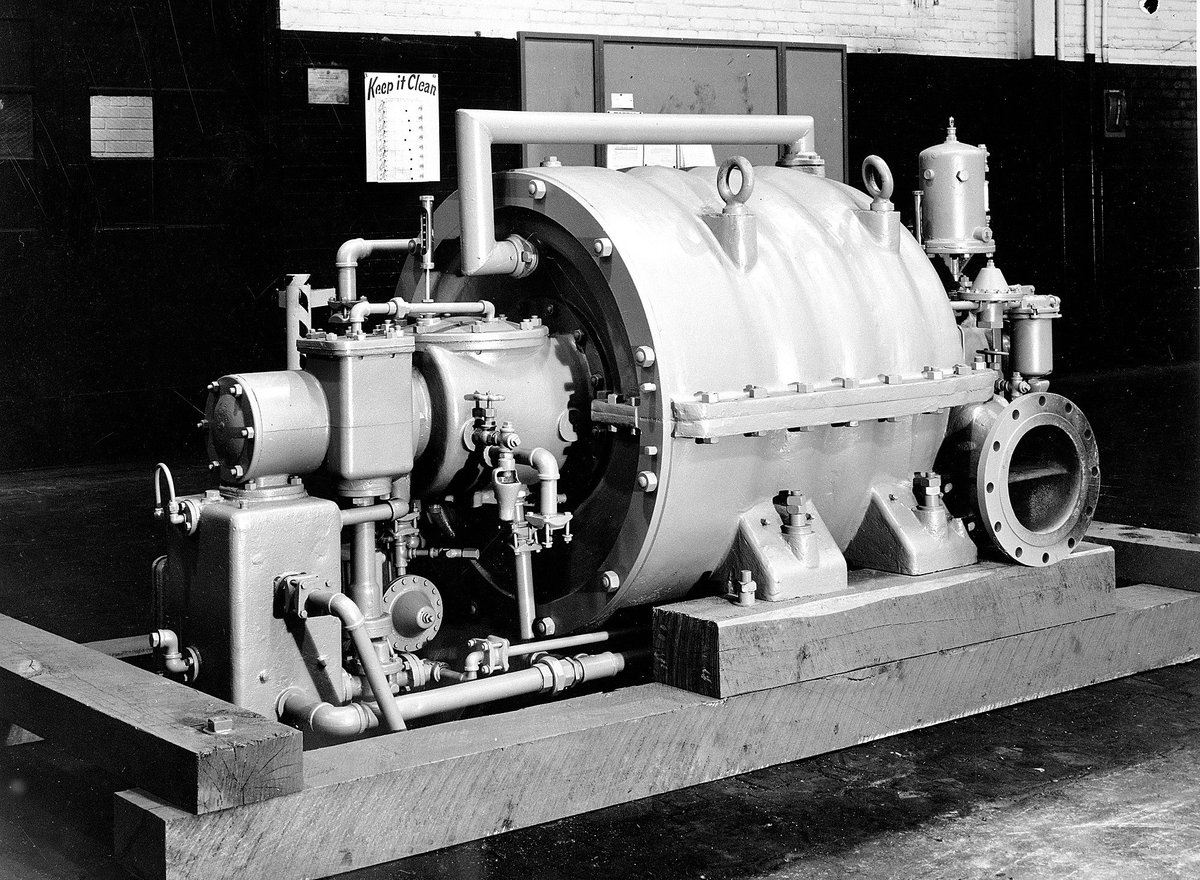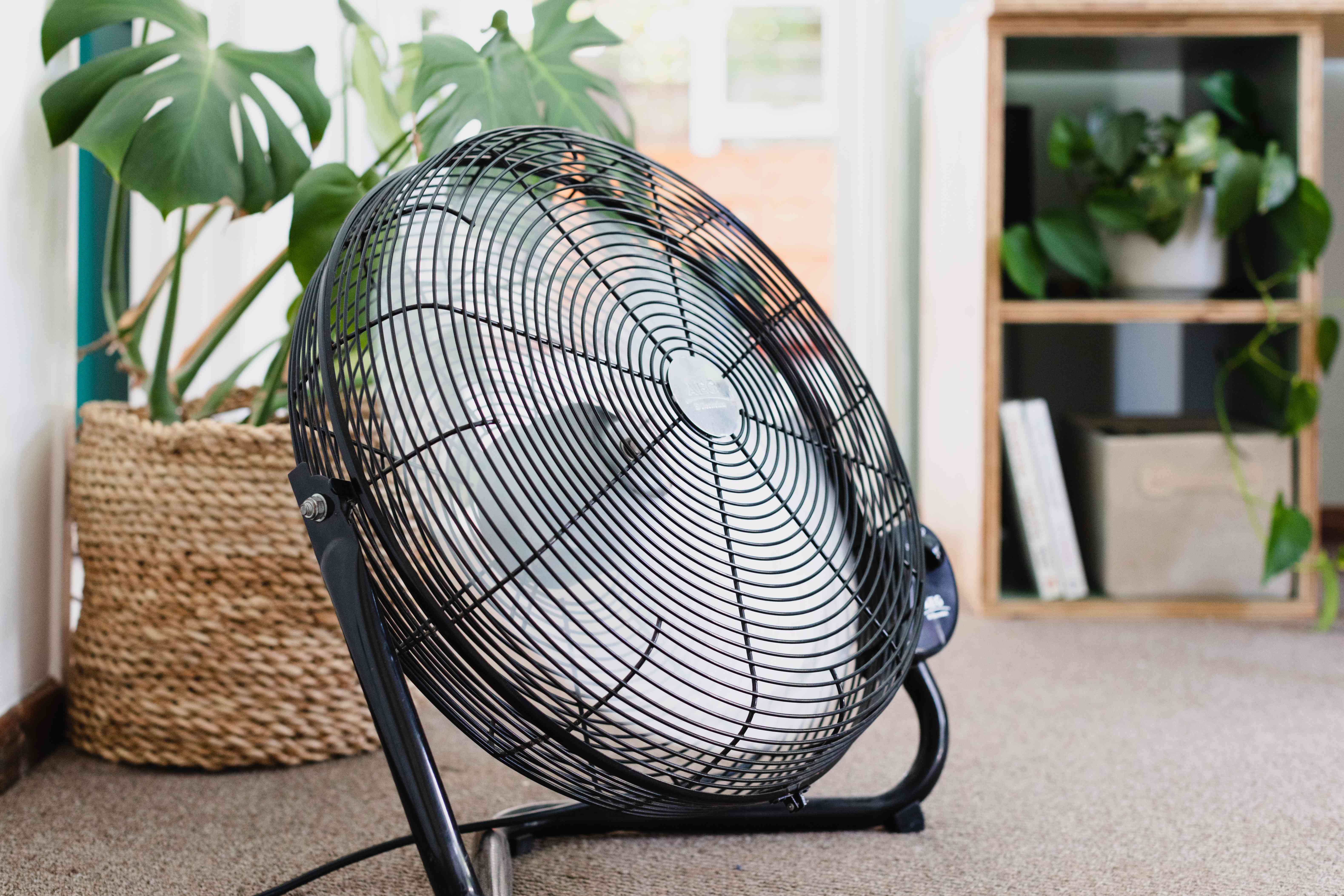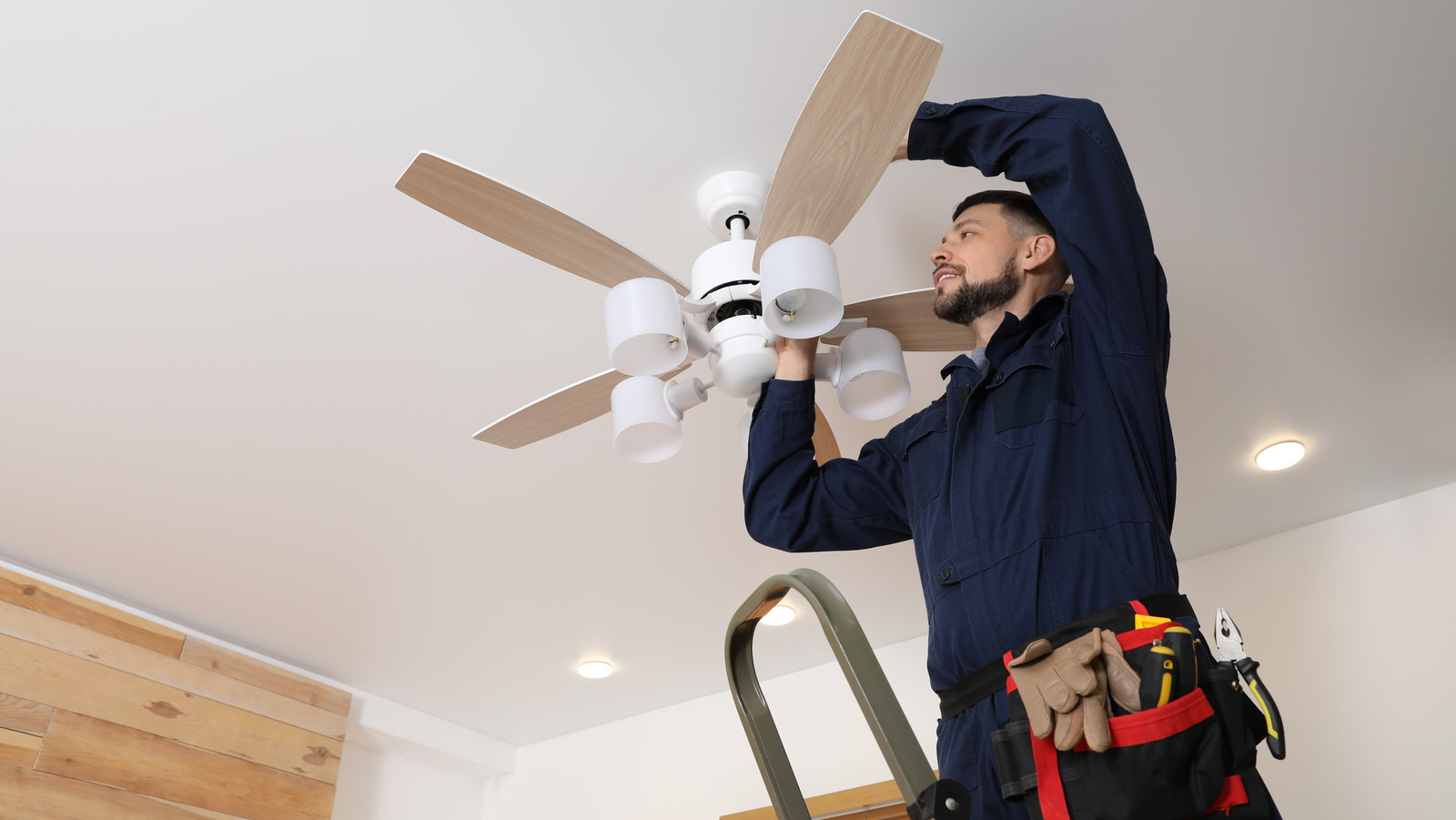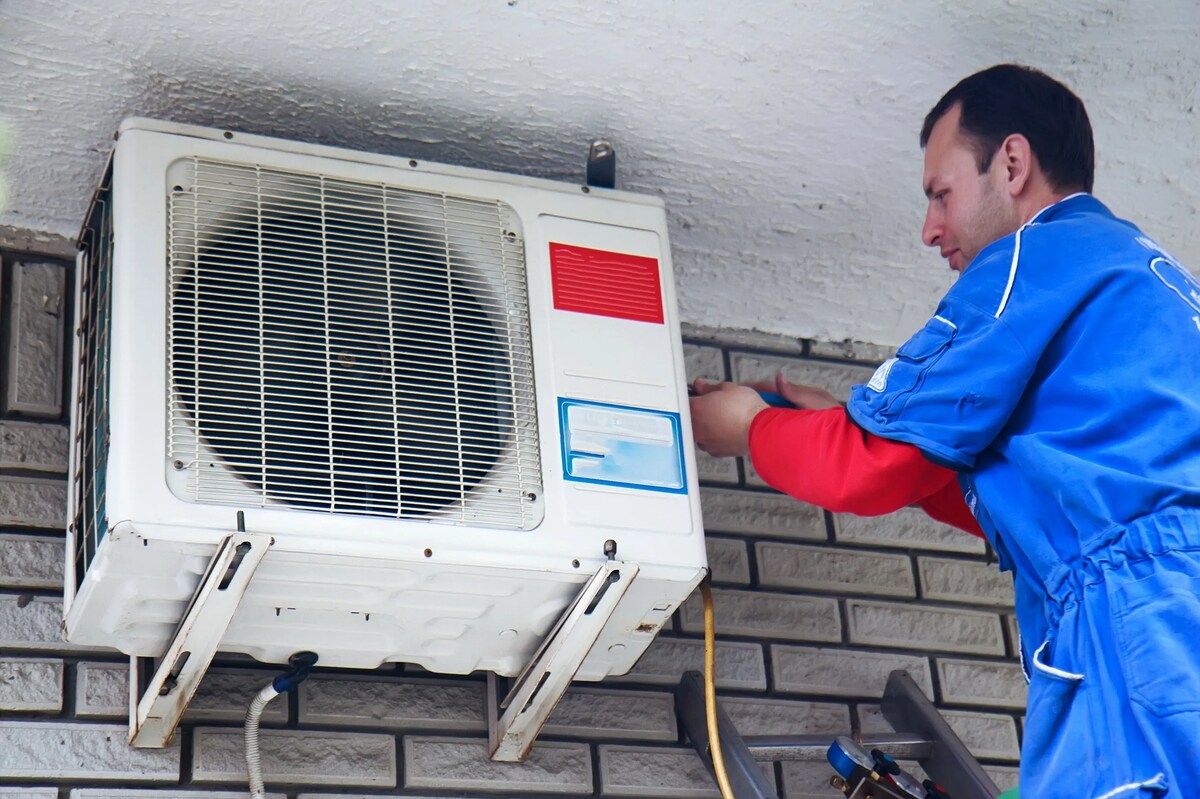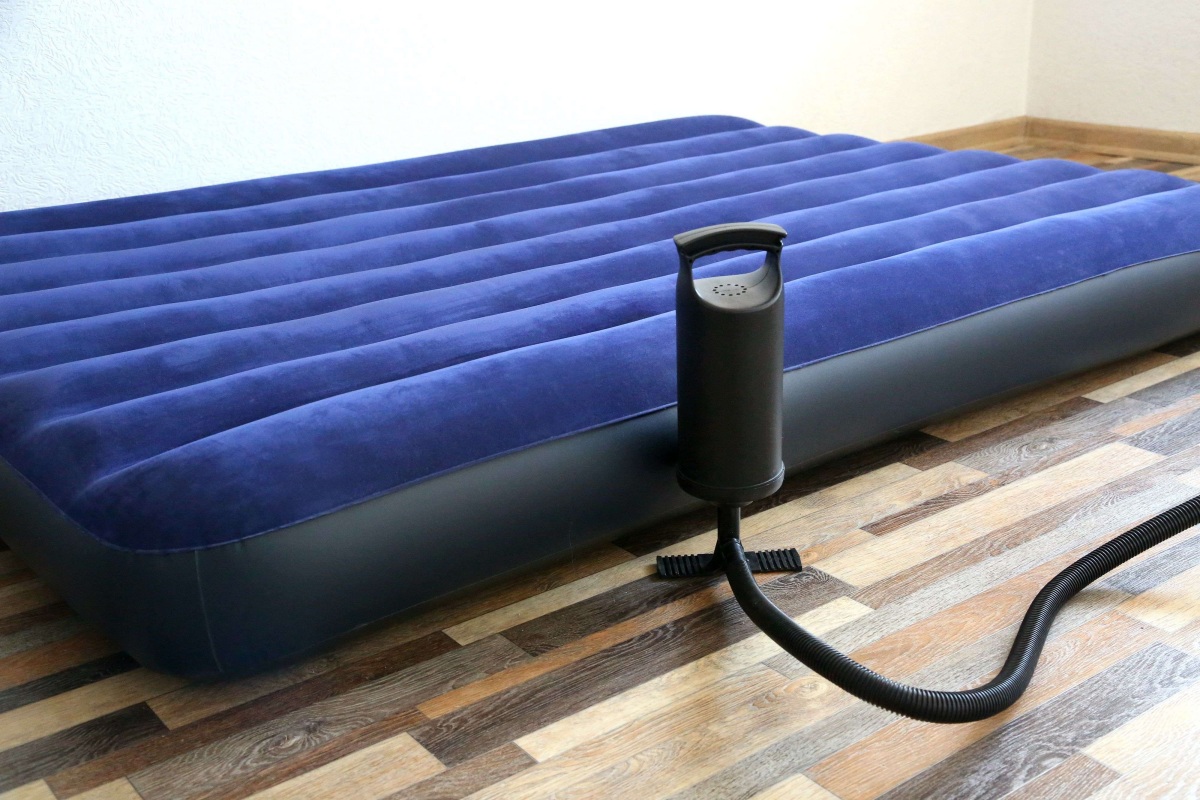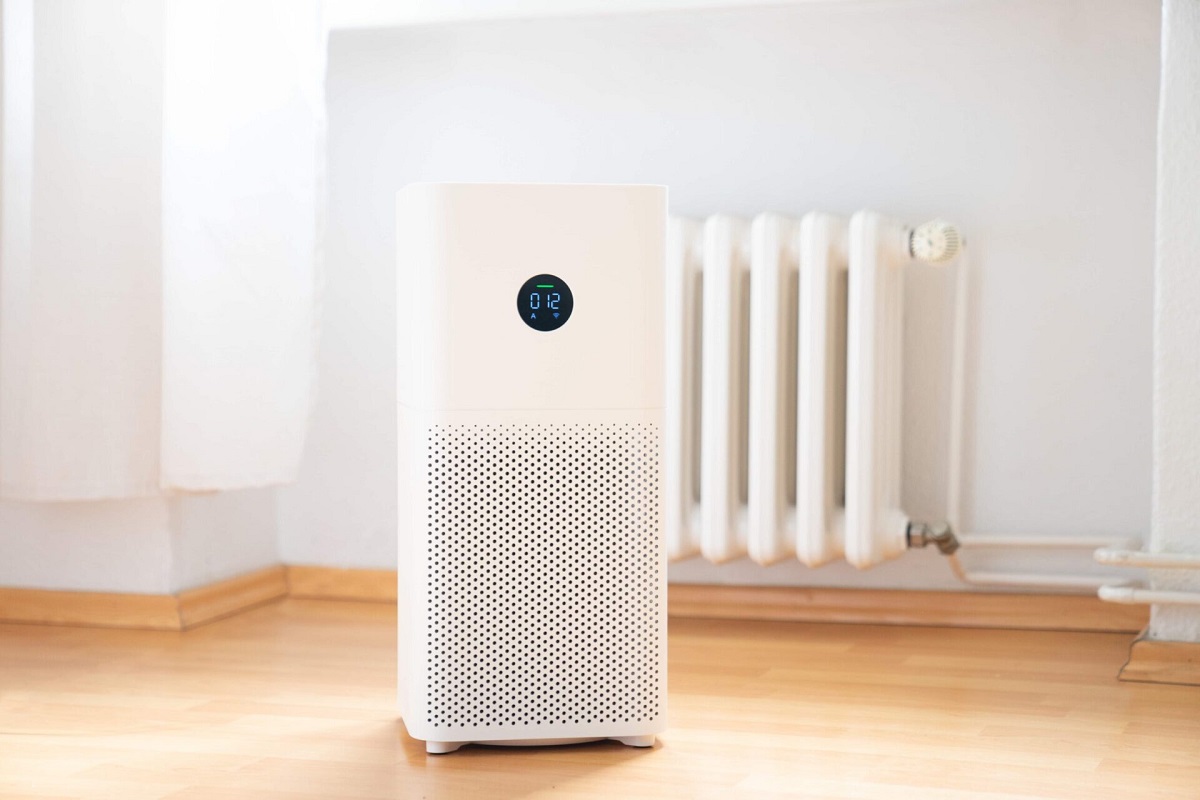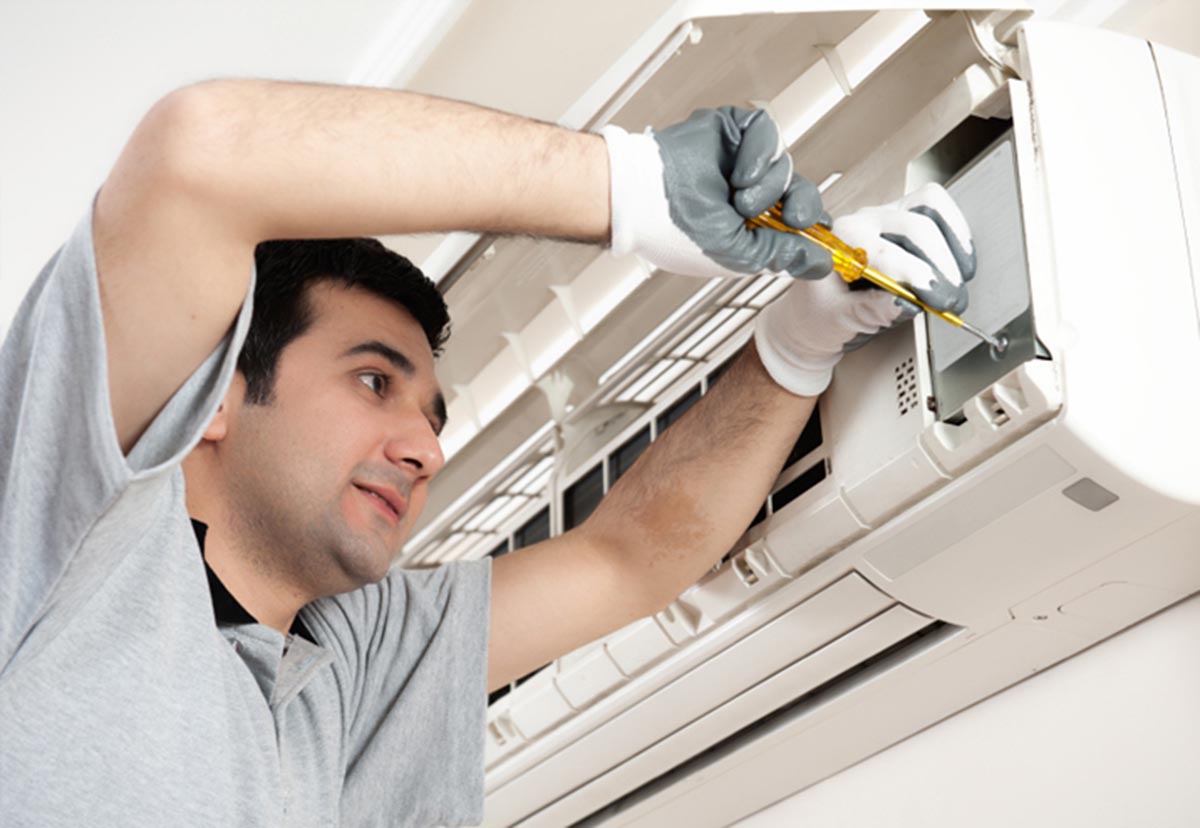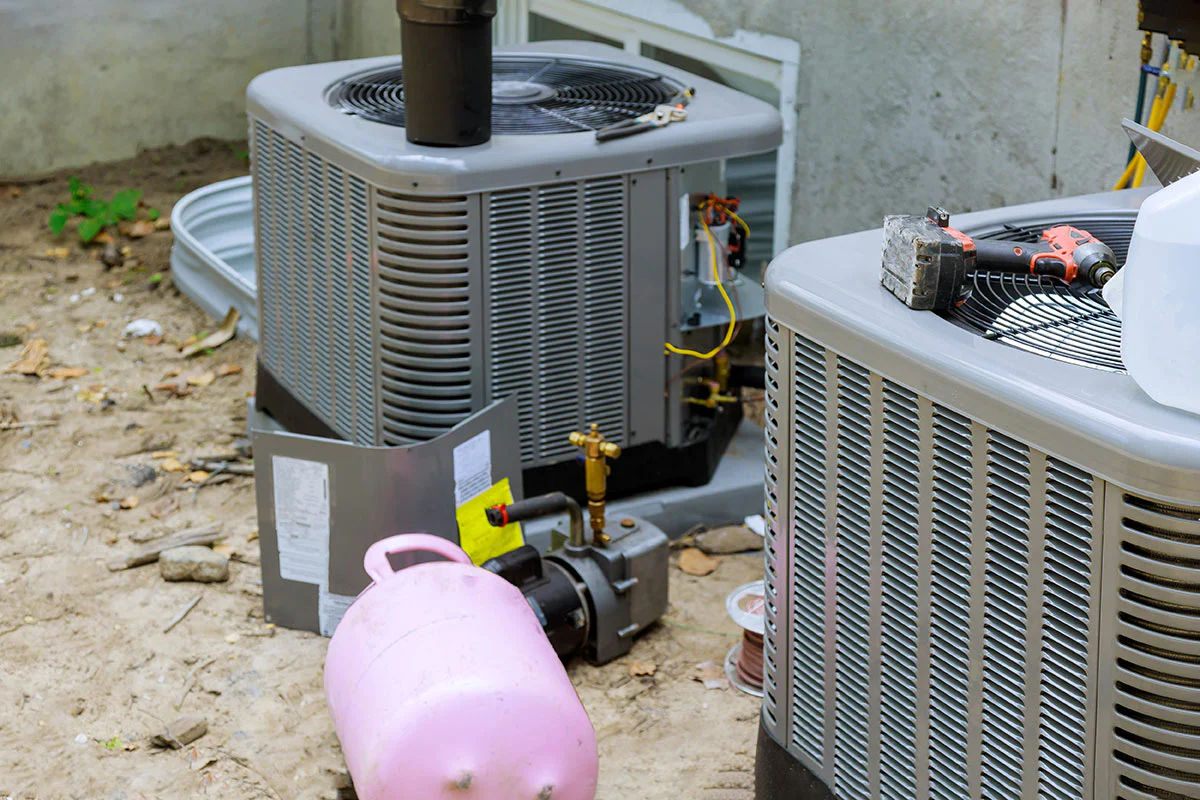Home>Home Maintenance>How Long Does It Take To Cool A House The First Time The Air Conditioner Is Started


Home Maintenance
How Long Does It Take To Cool A House The First Time The Air Conditioner Is Started
Modified: October 20, 2024
Find out the ideal duration to cool your home the first time you use your air conditioner. Get expert advice on home maintenance and cooling efficiency.
(Many of the links in this article redirect to a specific reviewed product. Your purchase of these products through affiliate links helps to generate commission for Storables.com, at no extra cost. Learn more)
Introduction
When it comes to cooling your house, the first time you start your air conditioner can be a bit of a waiting game. How long will it take for the temperature to reach a comfortable level? Well, the answer depends on a variety of factors, including the size of your house, the quality of insulation, the efficiency of your air conditioner, and even the temperature outside. In this article, we will explore these factors and provide helpful tips on how to cool your house efficiently the first time you start your air conditioner.
One of the main factors that affect the cooling time is the size of your house. Larger houses generally take longer to cool down as there is more space to cool. A small apartment may cool down in just a few minutes, while a large multi-story house may take several hours to reach the desired temperature. Additionally, the quality of insulation and weatherstripping in your house plays a significant role in how efficiently it retains the cool air. A well-insulated and properly weatherstripped house will cool down faster as it prevents the cold air from escaping and the hot air from entering.
The efficiency of your air conditioner also plays a crucial role in how quickly and effectively your house cools down. An older or less efficient air conditioner may take longer to cool the space, while a newer and more efficient unit will cool your house much faster. It is important to ensure that your air conditioner is properly maintained and serviced regularly to keep it functioning at its best.
The temperature outside is another factor that affects the cooling time. If it’s a scorching summer day with high temperatures, it will take longer for your air conditioner to cool your house compared to a mild summer day. Moreover, the starting temperature inside your house plays a significant role in the overall cooling time. If you set your thermostat to a temperature much higher than the current temperature inside, it will take longer for the air conditioner to bring it down to the desired level.
Now that we understand the factors that affect cooling time, let’s take a look at some steps you can take to cool your house efficiently the first time you start your air conditioner. By following these tips, you can optimize the cooling process and enjoy a comfortable indoor environment during those hot summer months.
Key Takeaways:
- Keep your house cool by closing blinds, using ceiling fans, and setting the thermostat at a moderate temperature. Regular air conditioner maintenance and proper insulation also help optimize cooling efficiency.
- Understanding factors like house size, insulation, and air conditioner efficiency is key to efficient cooling. Implementing strategies like using ceiling fans and programmable thermostats can enhance comfort and energy savings.
Factors Affecting Cooling Time
When it comes to cooling your house, several factors can influence the amount of time it takes for your air conditioner to reach the desired temperature. Understanding these factors will help you optimize the cooling process and ensure a comfortable indoor environment. Let’s explore the main factors that can affect the cooling time.
Size of the House: The size of your house plays a significant role in how long it takes to cool down. Larger houses have more square footage to cool, which means it will take more time for the air conditioner to distribute the cool air evenly throughout the space. On the other hand, smaller houses or apartments may cool down relatively quickly due to a smaller area that needs to be cooled.
Insulation and Weatherstripping: The quality of insulation and weatherstripping in your house is crucial for maintaining a comfortable indoor temperature. Good insulation acts as a barrier, preventing the cool air from escaping and the hot air from entering. Similarly, well-sealed windows and doors with proper weatherstripping can minimize air leakage and improve the efficiency of your air conditioner. A house with poor insulation and weatherstripping will take longer to cool down as it allows for air leakage and reduces the effectiveness of the air conditioning system.
Efficiency of the Air Conditioner: The efficiency of your air conditioner directly impacts the cooling time. A high-efficiency air conditioner will cool your house faster and more effectively compared to an older or less efficient unit. If you have an older air conditioner or suspect that your current unit is not functioning optimally, consider upgrading to a more energy-efficient model. Not only will it cool your house faster, but it will also result in energy savings over the long term.
Temperature Outside: The ambient temperature outside influences the cooling time of your house. If it’s an extremely hot day, the air conditioner will have to work harder and longer to combat the high outdoor temperatures. On the other hand, if it’s a relatively cooler day, the air conditioner will be able to cool your house more quickly. This factor is particularly relevant in regions with extremely hot climates where the outdoor temperature can be a challenging obstacle for cooling the house.
Starting Temperature Inside: The starting temperature inside your house also affects the cooling time. If you set your thermostat to a temperature significantly higher than the actual temperature inside, it will take longer for the air conditioner to reach the desired temperature. To optimize the cooling process, try setting the thermostat to a temperature that is only a few degrees lower than the current indoor temperature.
So, keep in mind these factors when considering the cooling time of your house. While you may not have control over the size of your house or the outside temperature, you can take measures to improve insulation, maintain your air conditioner’s efficiency, and set the thermostat appropriately. By doing so, you can reduce the cooling time and ensure a comfortable and refreshing indoor environment.
Size of the House
When it comes to cooling your house, the size of the space plays a significant role in determining how long it takes for your air conditioner to cool it down. Larger houses generally take longer to cool as there is more square footage to cool and distribute the cool air evenly throughout the space.
A small apartment or a compact house may cool down relatively quickly, typically within a matter of minutes. The air conditioner’s cooling capacity can effectively reach all corners and rooms of a smaller space, resulting in a faster cooling process. The limited square footage allows for better airflow and temperature distribution, resulting in a more rapid change in the indoor temperature.
On the other hand, larger houses with multiple floors and rooms will require more time to cool down. The air conditioner needs to work harder to circulate the cool air throughout the entire house, especially if the rooms are far apart or if there are multiple levels. This can lead to varying cooling times in different areas of the house, with upper floors typically taking longer to cool than lower floors.
Moreover, the layout and architecture of the house can also impact the cooling time. Houses with open floor plans or fewer interior walls allow for better airflow and temperature distribution. In such cases, the air conditioner can more effectively cool the space as the cool air can easily flow through the open layout. On the other hand, houses with many interior walls or smaller rooms may experience slower cooling times as the air has to travel through more restricted pathways.
It’s important to note that the size of the house is not the sole determining factor for cooling time. Other factors like insulation, weatherstripping, and the efficiency of the air conditioner also play a significant role. A well-insulated house with proper weatherstripping can retain the cool air and prevent hot air infiltration, reducing the cooling time. Similarly, a high-efficiency air conditioner will cool the house faster regardless of its size.
When considering the size of your house and its impact on cooling time, it’s essential to choose an air conditioner with the appropriate cooling capacity. An undersized air conditioner will struggle to cool a large house efficiently, leading to longer cooling times and possible strain on the unit. Conversely, an oversized air conditioner may cycle on and off frequently, resulting in uneven temperatures and inefficient cooling. Consulting with a professional HVAC technician can help determine the right size air conditioner for your specific house.
Overall, the size of your house is one of the main factors influencing the cooling time. While larger houses will generally take longer to cool down compared to smaller ones, other factors like insulation, air conditioner efficiency, and layout also play significant roles. By considering all these factors and optimizing the cooling process, you can ensure a comfortable and refreshing indoor environment, regardless of the size of your house.
Insulation and Weatherstripping
Insulation and weatherstripping are essential components of a well-maintained home that plays a crucial role in energy efficiency and comfort. When it comes to cooling your house, the quality of insulation and weatherstripping can significantly impact the cooling time and energy consumption of your air conditioning system.
Insulation: Insulation acts as a thermal barrier, helping to regulate the temperature inside your house. It prevents the transfer of heat between the inside and outside, keeping the cool air in during the summer and the warm air in during the winter. Proper insulation helps create a more stable and comfortable indoor environment and can significantly reduce cooling and heating energy requirements.
The level and quality of insulation can vary depending on the age and construction of your house. Common areas of insulation include attics, walls, and floors. Insulation materials range from fiberglass to cellulose to spray foam, each with different R-values that indicate their thermal resistance. The higher the R-value, the better the insulation’s ability to resist heat transfer.
Insufficient or poorly installed insulation can result in significant energy losses and decreased cooling efficiency. Without proper insulation, the cool air from your air conditioning system can quickly escape through leaks, walls, and the roof. Consequently, the air conditioner has to work harder and longer to compensate for the heat gain, leading to extended cooling times, increased energy consumption, and higher utility bills.
Weatherstripping: Weatherstripping is another crucial aspect of maintaining a well-insulated house. It refers to the process of sealing gaps and cracks around windows and doors to prevent air leakage. These gaps can occur due to normal wear and tear, loose frames, or improper installation. Weatherstripping helps keep the cool air inside your house and prevents warm air from infiltrating from outside.
Weatherstripping materials can vary, including adhesive foam tape, door sweeps, V-strip, and door gaskets. The choice of material depends on the location and size of the gaps and the type of door or window. Proper weatherstripping can significantly improve the energy efficiency of your house by preventing drafts and reducing air leakage.
By ensuring proper insulation and weatherstripping, you can enhance the cooling efficiency of your air conditioning system and reduce the cooling time of your house. Here are a few tips to improve insulation and weatherproofing:
- Inspect the insulation in your attic and walls, and if necessary, add more insulation to improve its effectiveness.
- Seal any gaps or cracks in exterior walls, windows, and doors using caulk or weatherstripping materials.
- Use window treatments, such as blinds or curtains, to block sunlight and reduce heat gain during the day.
- Ensure proper sealing of air ducts to minimize air leakage and maximize cooling efficiency.
- Consider upgrading to energy-efficient windows and doors that have built-in insulation features.
By investing in proper insulation and weatherstripping, you can create a more energy-efficient and comfortable home. Not only will this help reduce cooling time, but it will also provide long-term energy savings and contribute to a more sustainable living environment.
Efficiency of the Air Conditioner
The efficiency of your air conditioner plays a crucial role in how quickly and effectively your house cools down. An efficient air conditioning system not only provides better cooling performance, but it also helps reduce energy consumption and save on utility bills. On the other hand, an older or less efficient air conditioner may take longer to cool the space and may consume more energy in the process.
One of the key factors that determine the efficiency of an air conditioner is its Seasonal Energy Efficiency Ratio (SEER) rating. The SEER rating represents the cooling output of the system in relation to the energy input over a typical cooling season. The higher the SEER rating, the more efficient the air conditioner. Newer air conditioners are required to have a minimum SEER rating, typically ranging from 13 to 25 or higher, depending on the region.
In addition to the SEER rating, advancements in technology have led to the development of various features and components that enhance the efficiency of air conditioners. These include:
- Variable-speed compressors: Traditional single-speed compressors operate at a fixed speed, resulting in frequent on/off cycles. Air conditioners with variable-speed compressors can adjust their cooling output based on the current cooling demands, resulting in more precise temperature control, reduced energy consumption, and quieter operation.
- High-efficiency coils: The coils in the air conditioner play a crucial role in heat exchange. High-efficiency coils, such as those made from copper or other advanced materials, have better heat transfer properties, allowing the air conditioner to cool the air more efficiently.
- Smart thermostat compatibility: Many modern air conditioners are compatible with smart thermostats, which allow for precise temperature control and scheduling. Smart thermostats can adjust temperature settings based on occupancy, optimize energy usage, and provide remote control capabilities, thereby improving overall energy efficiency.
- Zoning capabilities: Air conditioning systems with zoning capabilities enable different areas of the house to be cooled independently. By cooling only the occupied areas, zoning can lead to energy savings and faster cooling times for those specific areas.
- Regular maintenance: Proper maintenance of your air conditioner is essential for ensuring optimal performance and efficiency. This includes regular filter cleaning or replacement, coil cleaning, and checking for any leaks or obstructions in the system. Regular maintenance can help identify and address any issues that may affect the efficiency of the unit.
Upgrading to a more efficient air conditioner can result in several benefits beyond faster cooling times. It can significantly reduce energy consumption, leading to lower utility bills and a smaller environmental footprint. Additionally, an efficient air conditioner can provide enhanced indoor air quality and improve overall comfort levels in your home.
When shopping for a new air conditioner, look for units with high SEER ratings and energy-efficient features. Consult with HVAC professionals to determine the appropriate cooling capacity for your house to ensure optimal efficiency. Regular maintenance and proper use of the air conditioner will help maintain its efficiency over time.
By investing in an efficient air conditioning system and taking steps to maximize its performance, you can enjoy faster cooling and increased comfort while keeping energy consumption and costs in check.
Temperature Outside
The temperature outside is a significant factor that can affect the cooling time of your house. When the outdoor temperature is high, it can be more challenging for your air conditioner to cool down your house efficiently and quickly. Conversely, on cooler days, the air conditioner can cool your house more effectively and in a shorter period of time.
When the outdoor temperature is hot, the air conditioner has to work harder to lower the indoor temperature. It needs to overcome the heat gain from the sun, infiltration of warm air through windows and doors, and the overall heat load inside the house. Additionally, the temperature of the outdoor air affects the temperature of the air entering the air conditioner’s condenser coil, which plays a vital role in heat exchange.
In regions with extremely hot climates, where summer temperatures soar, cooling a house can take more time. If the outside temperature is excessively high, it may be harder for the air conditioner to bring the indoor temperature down to the desired level. This can result in longer cooling cycles and increased energy consumption.
On the other hand, on cooler days or during the evenings, when the temperature outside is lower, it’s generally easier for the air conditioner to cool your house. The cooler outdoor air helps the air conditioner to dissipate heat more efficiently, resulting in shorter cooling times. This can be particularly advantageous in areas with milder summers or in locations with cooler climates.
It’s important to note that while the outdoor temperature affects the cooling time, the type and capacity of your air conditioning system also play significant roles. A properly sized and efficient air conditioner can better handle high outdoor temperatures and cool your house more effectively, regardless of the external conditions.
Controlling the temperature inside your house on hot days can help mitigate the impact of the outdoor temperature on cooling time. Here are a few tips:
- Set your thermostat to a reasonable and comfortable temperature. Avoid setting it too low, as it may not be practical, and the air conditioner will have to work harder to achieve that temperature.
- Use window coverings, such as blinds or curtains, to block direct sunlight and reduce heat gain from outside.
- Seal any air leaks around windows and doors to minimize the infiltration of warm air.
- Consider using fans or ventilation to supplement the cooling provided by the air conditioner. Fans help circulate the cool air, making it feel more comfortable.
- Schedule your cooling activities to take advantage of cooler times of the day, such as early mornings or evenings, when the outdoor temperature is lower.
By understanding and managing the impact of the outdoor temperature on your cooling system, you can optimize its performance and reduce the cooling time of your house. Although you cannot control the weather, you can implement strategies to minimize its impact and maintain a comfortable indoor environment during hot summer days.
Starting Temperature Inside
The starting temperature inside your house is another factor that can affect the cooling time when you turn on your air conditioner. The starting temperature refers to the indoor temperature at the time you initiate the cooling process.
If the starting temperature inside your house is significantly higher than the desired temperature, it will take longer for the air conditioner to cool the space down. The greater the difference between the starting temperature and the desired temperature, the longer it will take for the air conditioner to reach the set cooling level.
When the indoor temperature is higher, the air conditioner needs to work harder and longer to remove the heat from the air and cool it down. This happens because the air conditioner needs to overcome the heat load within the house, including heat gain from outside, heat generated by appliances or lights, and any residual heat trapped inside from previous activities.
Setting your thermostat to an excessively low temperature in an attempt to cool the house faster is not the solution. The air conditioner will still take the same amount of time to reach the desired temperature, but you may end up overcooling the space and wasting energy.
Instead, it is recommended to set your thermostat to a temperature that is only a few degrees lower than the current indoor temperature. This allows the air conditioner to cool the space more efficiently and reach the desired temperature within a reasonable time frame.
It’s worth noting that even if the starting temperature inside your house is relatively high, a properly sized and efficient air conditioner can still cool it down effectively. However, it may take longer to reach the desired temperature compared to starting from a lower indoor temperature.
A few helpful tips to optimize the cooling process based on the starting temperature inside your house include:
- Set your thermostat to a moderate temperature, typically a few degrees lower than the current indoor temperature.
- Allow the air conditioner to run for a sufficient amount of time to gradually cool the space to the desired temperature.
- Avoid turning the thermostat to the lowest setting in an attempt to speed up the cooling process. It will not cool the house faster and may result in unnecessary energy consumption.
- Close windows and doors to minimize heat gain from outside and ensure that the cool air stays inside the house.
- Consider implementing energy-efficient practices, such as using ceiling fans or adjusting window coverings, to complement the cooling provided by the air conditioner.
By setting the thermostat appropriately and allowing the air conditioner to gradually cool the space, you can optimize the cooling process regardless of the starting temperature inside your house. Remember, patience is key, and allowing the air conditioner to work efficiently at a moderate temperature setting will provide optimal comfort and energy savings in the long run.
Steps to Cool a House for the First Time
Cooling your house for the first time with your air conditioner requires a strategic approach to ensure efficient and effective cooling. By following these steps, you can optimize the cooling process and create a comfortable indoor environment during those hot summer months.
1. Set the Thermostat: Start by setting the thermostat to the desired temperature. It is recommended to set it at a moderate temperature that provides comfort without overcooling the space. Avoid setting the thermostat too low, as it will not cool the house faster and may lead to unnecessary energy consumption.
2. Close Windows and Doors: Close all windows and exterior doors to prevent warm air from entering and cool air from escaping. Ensure that all doors and windows are properly sealed to minimize air leakage and maintain the cooled air inside the house.
3. Use Ceiling Fans: Utilize ceiling fans or portable fans to enhance the cooling effect. Fans create a breeze that helps evaporate moisture from your skin, making you feel cooler. They also help circulate the cool air throughout the house, making the cooling process more efficient.
4. Close Blinds and Curtains: Close blinds, curtains, or shades during the day to block sunlight and minimize heat gain. Direct sunlight can significantly increase the temperature inside your house, making it harder for the air conditioner to cool the space. Keeping blinds and curtains closed can help reduce the heat load and increase the efficiency of the cooling process.
5. Use Programmable Thermostats: Consider using programmable thermostats to optimize energy usage and cooling schedules. Programmable thermostats allow you to set different temperature levels based on your daily routine. For example, you can program the thermostat to increase the temperature during times when the house is unoccupied and lower it before you return, ensuring a cool and comfortable living space as needed.
6. Air Conditioner Maintenance: Regular maintenance of your air conditioner is essential to keep it running efficiently. Clean or replace air filters regularly to ensure proper airflow and maximize cooling performance. Keep the outdoor unit free from debris and ensure proper ventilation. Additionally, schedule professional maintenance for your air conditioning system to check for any issues and optimize its performance.
7. Be Patient: Finally, be patient and allow the air conditioner sufficient time to cool the house. Cooling a house, especially for the first time, takes time. The air conditioner needs to overcome the heat gain from outside, cool the walls and furniture, and stabilize the indoor temperature. Avoid continuously adjusting the thermostat, as it will not speed up the process and may result in unnecessary energy usage.
By following these steps, you can ensure an efficient and effective cooling process when starting your air conditioner for the first time. Remember, maintaining proper insulation, weatherstripping, and air conditioner efficiency can further enhance the cooling process and maximize energy savings. Enjoy a cool and comfortable home throughout the summer!
It can take 1-3 hours for a house to cool down the first time the air conditioner is started, depending on the size of the house and the temperature outside. Close windows and doors to help it cool faster.
Setting the Thermostat
Setting the thermostat correctly is essential for optimal cooling and energy efficiency in your house. The thermostat controls the operation and temperature settings of your air conditioner, allowing you to maintain a comfortable indoor environment. By following these guidelines, you can effectively set the thermostat and create a pleasant and energy-efficient cooling experience.
1. Choose the Right Temperature: Start by selecting the desired temperature for your indoor space. It’s important to find a balance between your comfort preferences and energy savings. Setting the thermostat to a moderate temperature, typically around 78°F (25°C), is generally recommended for energy efficiency and comfort.
2. Avoid Extreme Temperature Settings: While you may be tempted to set the thermostat to a very low temperature in an attempt to cool the house faster, it won’t actually speed up the cooling process. Instead, it will result in unnecessary energy consumption and potential overcooling of the space. Stick to a reasonable temperature setting to avoid energy waste.
3. Consider Programmable or Smart Thermostats: Investing in a programmable or smart thermostat can enhance the efficiency of your cooling system. Programmable thermostats allow you to schedule temperature adjustments based on your daily routine. For example, you can program higher temperatures when you’re away from home and lower temperatures when you’re typically present. Smart thermostats take this a step further by learning your preferences and adjusting settings automatically for optimal comfort and energy efficiency.
4. Avoid Frequent Adjustments: Constantly adjusting the thermostat temperature may disrupt the cooling process and result in energy inefficiency. It’s best to set the thermostat at a comfortable temperature and allow the air conditioner to gradually and consistently cool the house to that level. Avoid frequent temperature changes unless necessary.
5. Utilize Fan Settings: Many thermostats offer fan settings that control the operation of the blower fan in the air conditioner. It’s generally more energy efficient to set the fan to “Auto” mode rather than running it continuously. The “Auto” mode allows the fan to run only when the air conditioner is actively cooling the space, conserving energy and reducing unnecessary air circulation.
6. Consider Zoning Systems: If your house has multiple zones or different cooling needs in various areas, consider installing a zoning system. Zoning allows you to set different temperature zones and control airflow to specific areas of your house, ensuring efficient and personalized cooling. This can be particularly beneficial in multi-story homes or spaces with varying cooling requirements.
7. Regularly Check and Calibrate: It’s important to periodically check and calibrate your thermostat to ensure it’s accurately measuring the temperature. Any discrepancies in temperature readings can lead to inefficient cooling and discomfort. If you suspect that your thermostat is not working correctly, consider having it inspected or replaced by a professional HVAC technician.
By setting the thermostat correctly, you can optimize the cooling efficiency of your air conditioner and maintain a comfortable indoor environment while minimizing energy consumption. Remember, proper insulation, weatherstripping, and regular air conditioner maintenance also contribute to enhanced cooling performance and energy savings.
Closing Windows and Doors
Closing windows and doors is a critical step in optimizing the cooling process and maintaining a comfortable indoor environment when using your air conditioner. Properly closing windows and doors helps prevent warm air from entering your house and cool air from escaping, ensuring efficient and effective cooling. Here’s why closing windows and doors is essential and how to do it properly.
1. Prevent Heat Gain: Closing windows and doors helps minimize the infiltration of warm air from the outside. When outdoor temperatures are high, leaving windows and doors open allows heat to enter your house, increasing the load on your air conditioner. Closing windows and doors creates a barrier that helps keep the warm air out, allowing your air conditioner to cool your home more efficiently.
2. Maintain Airflow: Closing windows and doors also helps maintain proper airflow within your house. Proper airflow is crucial for effective cooling, as it allows the conditioned air from your air conditioner to evenly distribute throughout the space. Leaving windows or doors open can create air imbalances and hinder the cooling process by diverting the cool air out of your house.
3. Use Weatherstripping: While closing windows and doors is essential, it’s equally important to ensure that they are properly sealed. Weatherstripping is a technique used to seal gaps and cracks around windows and doors to prevent air leakage. Weatherstripping materials, such as adhesive foam tape or door sweeps, can be easily applied to seal these openings effectively. Ensuring a tight seal with weatherstripping helps maintain the integrity of your closed windows and doors, reducing air leakage and optimizing cooling efficiency.
4. Check for Leaks: In addition to weatherstripping, regularly inspect windows and doors for any visible gaps or leaks. These leaks can occur over time due to wear and tear or as a result of improper installation. Sealing these gaps with caulk or other appropriate materials can further minimize air leakage, ensuring that your closed windows and doors contribute to efficient cooling.
5. Consider Window Treatments: Window treatments, such as blinds, curtains, or shades, can provide an additional layer of insulation and help block sunlight. Direct sunlight can significantly increase the temperature inside your house, forcing your air conditioner to work harder to cool the space. Closing blinds, curtains, or shades during the day minimizes heat gain and lightens the load on your cooling system.
6. Time Outdoor Activities: If you require airflow or prefer natural ventilation, consider opening windows or doors during cooler parts of the day, such as early mornings or evenings when outdoor temperatures are lower. This allows you to take advantage of natural cool breezes while reducing the impact on your air conditioner’s cooling load.
7. Educate Family Members: Lastly, educate your family members or household residents about the importance of closing windows and doors while the air conditioner is running. Encourage them to be mindful of keeping doors closed and to close windows after ventilation or outdoor activities to maintain the efficiency of your cooling efforts.
By closing windows and doors properly, you can prevent heat gain, maintain optimal airflow, and reduce air leakage in your house, enhancing the efficiency of your air conditioner. Additionally, combining these actions with other energy-saving practices, such as implementing weatherstripping, using window treatments, and timing outdoor activities, can further contribute to energy savings and create a comfortable living environment.
Using Ceiling Fans
Using ceiling fans in conjunction with your air conditioner can significantly enhance the cooling effect in your house, providing a more comfortable and energy-efficient environment. Ceiling fans create a breeze that helps evaporate moisture from your skin, making you feel cooler even at higher temperatures. Here’s how to effectively use ceiling fans to maximize their cooling benefits.
1. Set the Correct Direction: Most ceiling fans have a switch on the motor housing that allows you to change the direction of the fan blades. In the summer months, set the fan to spin counterclockwise (when looking up at the fan from below). This creates a downdraft, generating a cooling breeze in the room.
2. Run Fans Only When Occupied: To conserve energy, operate ceiling fans only when the room is occupied. Fans cool people, not the room, so there’s no need to leave them running in unoccupied spaces. Remember to turn off the fans when you leave the room to maximize energy savings.
3. Adjust Fan Speeds: Ceiling fans usually have multiple speeds. During hot summer days, set the fan to a higher speed to create a stronger airflow and provide a greater cooling effect. Experiment with different speed settings to find the most comfortable and energy-efficient level for your needs.
4. Utilize the Wind Chill Effect: The wind chill effect is the cooling sensation felt when air moves past the skin. By using ceiling fans alongside your air conditioner, you can raise the thermostat setting by a few degrees without compromising comfort. The breeze created by the fan helps evaporate perspiration on your skin, making you feel cooler and allowing you to set the air conditioner at a slightly higher temperature.
5. Adjust Fan Speeds: Ceiling fans usually have multiple speeds. During hot summer days, set the fan to a higher speed to create a stronger airflow and provide a greater cooling effect. Experiment with different speed settings to find the most comfortable and energy-efficient level for your needs.
6. Combine with Open Windows: Utilizing ceiling fans alongside open windows can help draw in cool outdoor air and create a cross breeze. This is particularly effective during cooler parts of the day, such as early mornings or evenings, when outdoor temperatures are lower. This natural ventilation can reduce reliance on your air conditioner, saving energy and promoting fresh air circulation.
7. Optimize Fan Placement: Install ceiling fans strategically to maximize their cooling benefits. Ideally, place the fan in the center of the room and at least 7 to 9 feet above the floor for optimal performance. This ensures proper air movement and circulation throughout the space.
By utilizing ceiling fans effectively, you can create a more comfortable and energy-efficient living space. Incorporating ceiling fans into your cooling strategy can reduce your reliance on the air conditioner, save energy, and lower utility costs. Remember to use ceiling fans wisely, adjust speed settings, and take advantage of the wind chill effect for maximum cooling benefits.
Closing Blinds and Curtains
Closing blinds and curtains is a simple yet effective strategy to optimize the cooling efficiency of your air conditioner and create a comfortable indoor environment. By blocking out sunlight and minimizing heat gain, you can reduce the workload on your cooling system and increase energy efficiency. Here’s why closing blinds and curtains is essential and how to do it effectively.
1. Block Sunlight and Heat: Closing blinds and curtains during the hottest parts of the day helps prevent direct sunlight from entering your house. Sunlight brings heat along with it, which can significantly increase the temperature inside your home. By blocking out the sunlight, you can minimize heat gain and keep your indoor space cooler.
2. Select Suitable Window Treatments: When choosing blinds or curtains, opt for light-colored or reflective materials that can reflect sunlight and heat away from your windows. Dark-colored window treatments tend to absorb heat, which can contribute to a warmer indoor environment. Additionally, consider using thermal or blackout curtains that provide insulation and further reduce heat transfer.
3. Close All Blinds and Curtains: It’s important to close all blinds and curtains in your house, not just the ones in rooms that receive direct sunlight. Even in shaded areas, closing blinds and curtains can help reduce heat gain from ambient temperature and prevent uneven heating throughout your home.
4. Utilize Timing Strategies: Pay attention to the position of the sun throughout the day and adjust your blinds and curtains accordingly. As the sun moves, open blinds or curtains on shaded or north-facing windows to allow natural light in, and close them on windows that receive direct sunlight to block the heat. This timed approach can help optimize natural lighting while minimizing heat gain.
5. Consider Window Film or Shades: Window films and shades can further enhance the cooling benefits of closed blinds and curtains. Reflective window films can help block out solar heat, while shades with insulating properties provide an additional layer of heat resistance. These options are particularly useful for windows that receive intense sunlight or face south or west.
6. Maximize Airflow: To maximize the cooling effect, ensure that your closed blinds and curtains do not obstruct the airflow from air conditioning vents or fans. Proper air circulation is crucial for an even distribution of cooled air throughout your home.
7. Use Blinds and Curtains at Night: Closing blinds and curtains can also be beneficial during the night. As the temperature drops, closing them can help prevent heat loss through windows and maintain a comfortable indoor temperature. Closing blinds and curtains at night is especially important if you live in areas where the temperature significantly decreases after sunset.
By closing blinds and curtains strategically, you can significantly reduce heat gain and improve the cooling efficiency of your air conditioner. Remember to combine this strategy with other energy-saving practices such as proper insulation, regular air conditioner maintenance, and the use of ceiling fans for optimal cooling and energy efficiency.
Using Programmable Thermostats
Programmable thermostats are valuable tools that can enhance the efficiency and convenience of your cooling system. By allowing you to schedule temperature adjustments based on your daily routine, programmable thermostats help optimize energy usage and create a comfortable indoor environment. Here’s how to effectively use programmable thermostats to maximize their benefits.
1. Set Temperature Schedules: Take advantage of your programmable thermostat’s scheduling capabilities to create temperature settings that align with your daily routine. Program the thermostat to raise the temperature when you’re typically away from home, such as during working hours, and lower it before you return. This helps minimize energy consumption and ensures a comfortable living space when you need it.
2. Avoid Drastic Temperature Changes: While programmable thermostats offer flexibility, it’s best to avoid drastic temperature changes. Instead of setting the thermostat drastically higher during your absence, aim for a temperature that is slightly higher or closer to the outdoor temperature. This avoids creating unnecessary cooling demand and alleviates the strain on your cooling system when you return home.
3. Leverage Adaptive Learning Features: Some programmable thermostats have adaptive learning capabilities that observe your temperature preferences and adjust settings automatically. These thermostats learn your habits and adapt to your schedule over time, eliminating the need for manual programming. Take advantage of this feature by allowing the thermostat to optimize temperature settings based on your comfort needs and energy efficiency goals.
4. Utilize Vacation or Away Mode: When you’re away on vacation or for an extended period, use the vacation or away mode on your programmable thermostat. This overrides the regular schedule and maintains a consistent temperature that conserves energy while maintaining a modest level of cooling to prevent excessive heat and humidity buildup in your absence.
5. Consider Smart Thermostats: Consider upgrading to a smart thermostat, which combines the features of programmable thermostats with advanced technology and connectivity. Smart thermostats can learn your preferences, monitor energy usage, and even provide remote control capabilities. Some models are compatible with voice assistants or smartphone apps, allowing for convenient control and real-time monitoring of your cooling system.
6. Optimize Temperature Setbacks: Temperature setbacks, or temporary adjustment of temperature settings, can be utilized to save energy when you’re away or asleep. Instead of maintaining the same temperature throughout the day, program the thermostat for temperature setbacks during periods when you don’t need as much cooling. For example, consider a temperature setback during sleeping hours or during times when the house is unoccupied to minimize energy usage.
7. Regularly Review and Adjust Settings: Periodically review your programmed temperature settings and make adjustments as needed. Changes in your routine, seasonal variations, or lifestyle changes may require modifications to your programmable thermostat settings. Stay mindful of your comfort needs and energy efficiency goals to ensure optimal use of your cooling system.
By effectively utilizing programmable thermostats, you can achieve personalized comfort, energy savings, and efficient cooling. However, it’s important to familiarize yourself with the features and functionality of your specific thermostat model and consult the manufacturer’s instructions for proper use. Regularly reviewing and optimizing your programmed settings will help you make the most of this energy-saving tool and create a comfortable living space while minimizing energy consumption.
Read more: How Long Does It Take To Declutter A House
Air Conditioner Maintenance
Maintaining your air conditioner is crucial for optimal performance, energy efficiency, and the longevity of the system. Regular maintenance helps ensure that your cooling system operates effectively, keeps your home comfortable, and minimizes potential breakdowns. Here are some key aspects of air conditioner maintenance to keep in mind.
1. Clean or Replace Air Filters: Clogged or dirty air filters restrict airflow and reduce the efficiency of your air conditioner. Regularly clean or replace the filters, ideally every one to three months, depending on the usage and filter type. Clean filters allow for improved airflow, reduce strain on the system, and maintain optimal cooling performance.
2. Check and Clean Evaporator and Condenser Coils: Over time, the evaporator and condenser coils can accumulate dirt, debris, and dust, reducing their efficiency. Inspect these coils regularly and clean them as necessary. Hire a professional or consult the manufacturer’s instructions for proper cleaning techniques, as improper handling can cause damage.
3. Clear Debris from the Outdoor Unit: The outdoor unit of your air conditioner can gather leaves, dirt, and other debris. Regularly inspect and clear any debris surrounding the unit. Ensure proper ventilation by maintaining a clear space around the unit, allowing for efficient operation and preventing potential airflow restrictions.
4. Check Condensate Drain Line: The condensate drain line is responsible for removing moisture accumulated during the cooling process. Over time, this drain line can become clogged with dirt or algae. Inspect the line regularly and clear any blockages to ensure proper drainage and prevent water damage or leaks.
5. Schedule Professional Maintenance: While some maintenance tasks can be handled by homeowners, it’s important to have your air conditioner professionally inspected and serviced at least once a year. A qualified HVAC technician can conduct a thorough inspection, clean the system, make any necessary adjustments, and identify any potential issues before they become major problems.
6. Maintain Proper Insulation and Sealing: Proper insulation and sealing of your house help maintain cool temperatures and reduce the workload on your air conditioner. Ensure that your home is properly insulated, especially in areas such as attics, walls, and windows. Additionally, check for gaps or cracks around windows and doors, and seal them properly to prevent air leakage.
7. Monitor Energy Consumption: Regularly monitor your air conditioner’s energy consumption to identify any unexpected increases. A sudden rise could indicate a potential issue with the system that requires attention. If you notice a significant spike in energy usage or any other concerns, contact a professional technician to assess the situation.
By following these air conditioner maintenance practices, you can ensure optimal performance, energy efficiency, and comfort. Regular upkeep minimizes the risk of breakdowns, extends the lifespan of your cooling system, and helps you enjoy a cool and comfortable indoor environment throughout the hot summer months.
Conclusion
Keeping your house cool during the hot summer months is essential for maintaining a comfortable living environment. By understanding the factors that affect cooling time and implementing the right strategies, you can optimize the efficiency of your air conditioner and create an enjoyable indoor space. From the size of your house to insulation, thermostat settings, and the use of ceiling fans and programmable thermostats, each aspect plays a crucial role in achieving effective and energy-efficient cooling.
The size of your house, insulation quality, and weatherstripping impact the cooling time. Proper insulation and sealing help retain the cool air inside and prevent warm air from infiltrating, while good weatherstripping prevents air leakage. Ensuring your air conditioner is efficient, well-maintained, and appropriately sized for your house contributes to faster cooling and energy savings.
Strategic steps such as setting the thermostat at a moderate temperature, closing windows and doors, and using ceiling fans in conjunction with your air conditioner enhance cooling efficiency. Additionally, closing blinds and curtains helps block out sunlight and minimize heat gain. Programmable thermostats offer convenience and energy savings, allowing you to create temperature schedules based on your routine.
Maintaining your air conditioner through regular cleaning, filter replacements, and professional maintenance ensures optimal performance and helps prevent potential breakdowns. Proper insulation, sealing, and monitoring of energy consumption are also key in maximizing cooling efficiency.
In conclusion, cooling your house effectively and efficiently involves a combination of various factors working in harmony. By understanding these factors and implementing the appropriate strategies, you can create a cool and comfortable indoor environment while minimizing energy consumption. Remember to consider the unique aspects of your house, maintain your air conditioner, and adapt your cooling approach to the specific requirements of your household. By doing so, you can enjoy a refreshing oasis during the hot summer months while keeping energy costs in check and contributing to a more sustainable lifestyle.
Frequently Asked Questions about How Long Does It Take To Cool A House The First Time The Air Conditioner Is Started
Was this page helpful?
At Storables.com, we guarantee accurate and reliable information. Our content, validated by Expert Board Contributors, is crafted following stringent Editorial Policies. We're committed to providing you with well-researched, expert-backed insights for all your informational needs.
